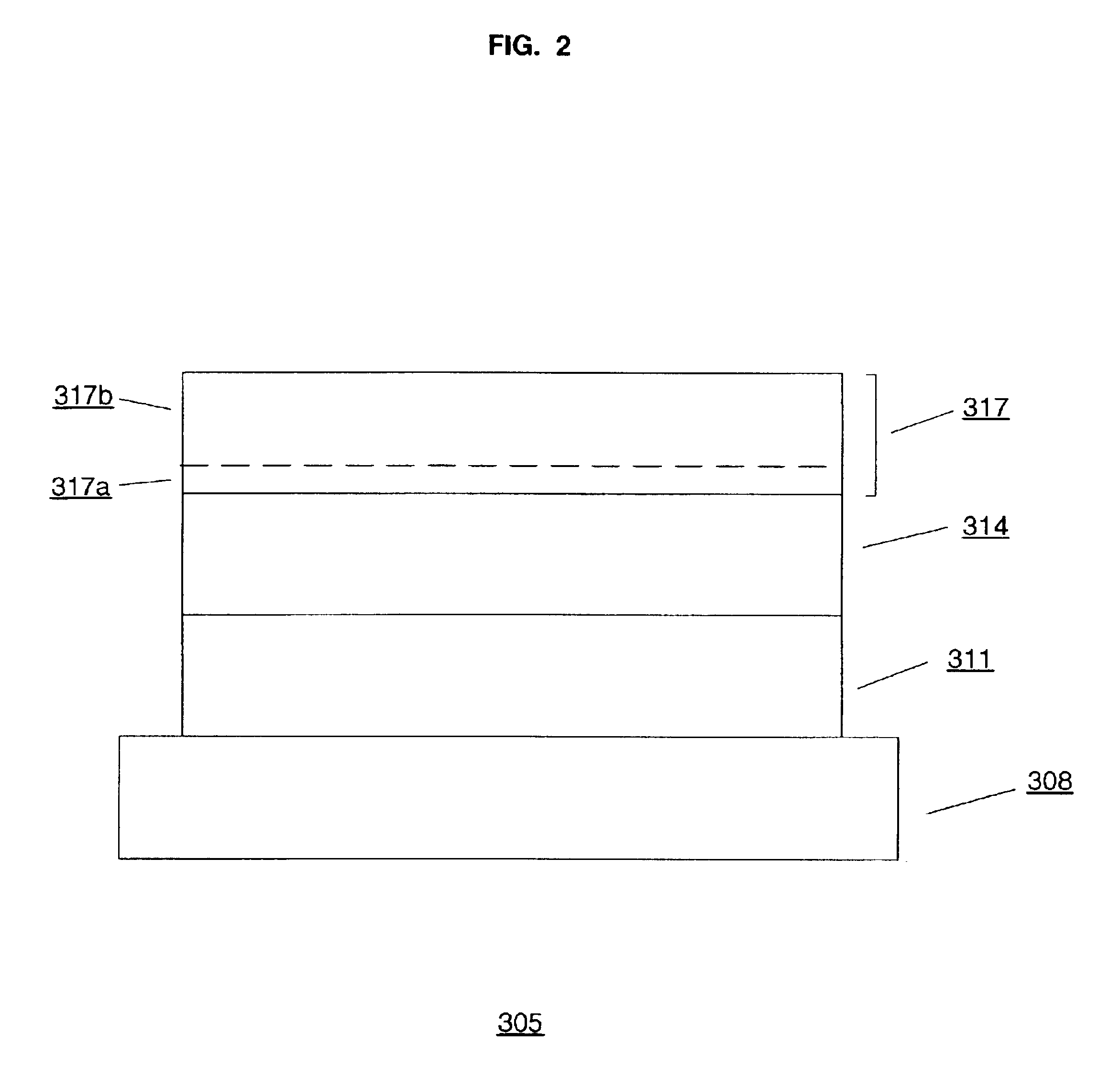Electrode for an electronic device
a technology of electronic devices and electrodes, applied in the direction of basic electric elements, semiconductor devices, electrical apparatus, etc., can solve the problems of low work function metals, low work function calcium cathode, and only a short time in air
- Summary
- Abstract
- Description
- Claims
- Application Information
AI Technical Summary
Problems solved by technology
Method used
Image
Examples
example 1
(OLED with a Prior Art Electron Injection Layer):
[0069]An OLED was fabricated in the following manner:[0070](1) for the conducting polymer layer, a 70 nm layer of a hole conducting polymer polyethylenedioxythiophene-polystyrenesulfonic acid (“PEDOT:PSS”) was deposited on an anode layer comprised of about 120 nm of indium tin oxide (“ITO”). This conducting polymer is commercially available from H. C. Starck, located in Goslar, Germany[0071](2) for the emissive polymer layer, a 70 nm layer of a substituted polyparaphenylenevinylene was deposited on the 70 nm layer of the conducting polymer layer. The emissive polymer layer is known by its commercial name “Super Yellow” and is commercially available from Covion Organic Semiconductors.[0072](3) for the electron injecting layer, a barium layer was deposited on the emissive layer by resistive-heating in a vacuum evaporator such that the barium layer was evaporated and deposited onto the emissive layer. The thickness of the barium layer is...
example 2
[0074]An OLED was fabricated in the following manner:[0075](1) for the conducting polymer layer, a 70 nm layer of a hole conducting polymer PEDOT:PSS was deposited on an anode layer comprised of about 120 nm of ITO.[0076](2) for the emissive polymer layer, a 70 nm layer of Super Yellow was deposited on the 70 nm layer of PEDOT:PSS.[0077](3) for the electron injecting layer, a cesium oxide layer was deposited on the Super Yellow layer. The thickness of the cesium oxide layer is 0.2 nm. The cesium oxide layer was formed by the resistive heating of the cesium carbonate, Cs2CO3, in a vacuum evaporator resulting in a thermal decomposition of the cesium carbonate. The thermal decomposition of the cesium carbonate produced two compounds: the cesium oxide and the carbon dioxide. The produced cesium oxide was deposited on the emissive layer and the carbon dioxide was removed by the vacuum. The cesium carbonate is commercially available from Aldrich Chemical Company located in Milwaukee, Wis....
example 3
[0082]An OLED was fabricated in the following manner:[0083](1) for the conducting polymer layer, a 70 nm layer of a hole conducting polymer PEDOT:PSS was deposited on an anode layer comprised of about 120 nm of ITO.[0084](2) for the emissive polymer layer, a 70 nm layer of Super Yellow was deposited on the 70 nm layer of PEDOT:PSS.[0085](3) for the electron injecting layer, the cesium oxide layer was deposited on the Super Yellow layer. The cesium oxide layer was formed by the resistive heating of the cesium carbonate, Cs2CO3, in the vacuum evaporator resulting in the thermal decomposition of the cesium carbonate. The thermal decomposition of the cesium carbonate produced two compounds: the cesium oxide and the carbon dioxide. The produced cesium oxide was deposited on the emissive layer and the carbon dioxide was removed by the vacuum.[0086](4) for the conductive cathode layer, a 250 nm layer of aluminum was deposited on the cesium oxide layer.
[0087]One set of OLED displays were pr...
PUM
 Login to View More
Login to View More Abstract
Description
Claims
Application Information
 Login to View More
Login to View More - R&D
- Intellectual Property
- Life Sciences
- Materials
- Tech Scout
- Unparalleled Data Quality
- Higher Quality Content
- 60% Fewer Hallucinations
Browse by: Latest US Patents, China's latest patents, Technical Efficacy Thesaurus, Application Domain, Technology Topic, Popular Technical Reports.
© 2025 PatSnap. All rights reserved.Legal|Privacy policy|Modern Slavery Act Transparency Statement|Sitemap|About US| Contact US: help@patsnap.com



